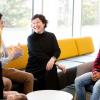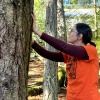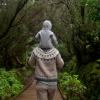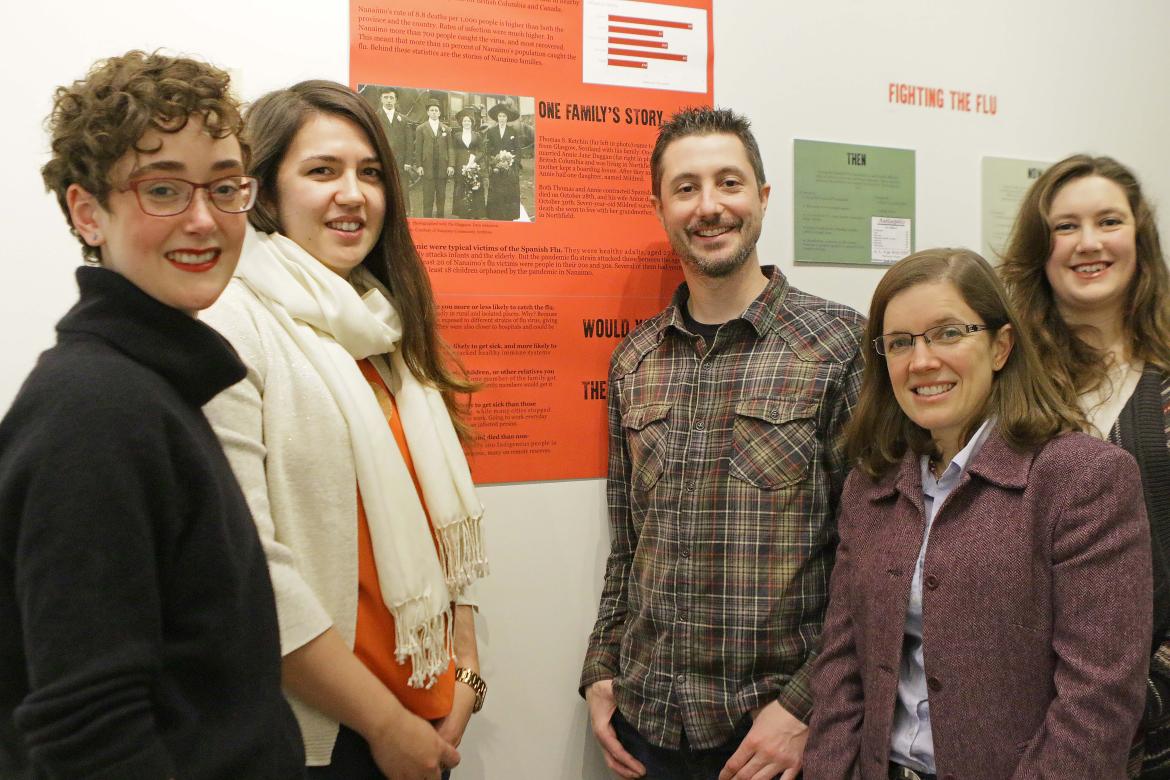
Students in a fourth-year History class got the unique opportunity to develop an exhibit for the Nanaimo Museum’s Community Gallery. From left to right: VIU student Josephine Kuhn; Chelsea Forseth, Nanaimo Museum’s Communications and Rental Coordinator; Jordan Johns, Nanaimo Museum’s Exhibit Technician; VIU History Professor Dr. Katharine Rollwagen; and VIU student Cheryl Wieler.
December 20, 2018 - 11:30am
Students in an upper-level History course at Vancouver Island University (VIU) are combining the research skills they are learning in the classroom with a crash course in exhibit development.
VIU History Professor Dr. Katharine Rollwagen’s Public History class has teamed up with the Nanaimo Museum to create an exhibit for the museum’s Community Gallery on the Spanish Flu pandemic of 1918 and its impact on Nanaimo. Called The Forgotten Flu, the exhibit combines personal stories with historical facts about the Spanish Flu. The pandemic closed schools, theatres and churches; hospitals overflowed with the sick; and dozens of Nanaimo’s residents died in a matter of weeks.
“It affected almost everyone, either personally or socially,” says Rollwagen. “The Spanish Flu pandemic was a real-life example of how Nanaimo reacted to a public health crisis, but most people today have no idea what it is about. Around the world, the Spanish Flu killed more people than the First World War. But because it happened as the First World War was ending, in many places it was forgotten for a long time.”
Maggie Acorn, a fourth-year History student who wants to become a teacher, says the highlight of working on the exhibit was interacting with working professionals who use history in their careers. Students worked with Christine Meutzner, Manager of Nanaimo Community Archives, to find facts and stories for the exhibit, and staff at the Nanaimo Museum ran two workshops with students on exhibit development.
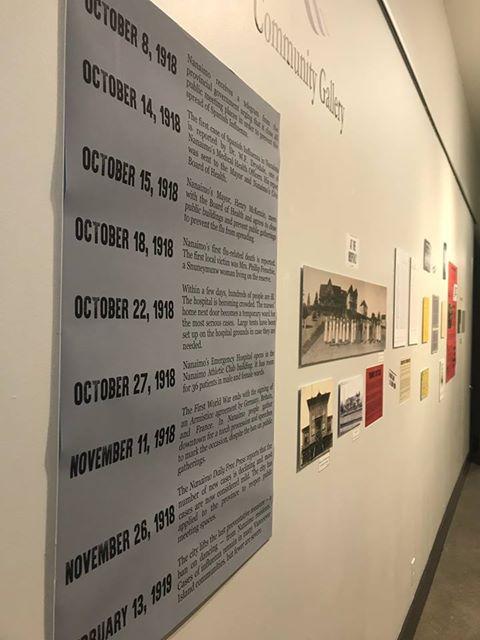 “This project allowed me to discover history in a broader sense,” says Acorn. “It was no longer about dates and statistics – it was real people and places I was researching. Because it was a community-based project, we got to leave the classroom and the library to do hands-on research, working with different organizations and looking at artifacts. Everyone had their own individual piece of the puzzle, and when you put all the pieces together, we realized how much we’d done.”
“This project allowed me to discover history in a broader sense,” says Acorn. “It was no longer about dates and statistics – it was real people and places I was researching. Because it was a community-based project, we got to leave the classroom and the library to do hands-on research, working with different organizations and looking at artifacts. Everyone had their own individual piece of the puzzle, and when you put all the pieces together, we realized how much we’d done.”
This type of collaboration is a first for the Nanaimo Museum, says Curator Aimee Greenaway, who is a VIU alumna herself, and she was impressed by how well-supported the students were and how much planning the class put into ensuring the pieces came together.
“For us, it’s the opportunity to expose students to career paths in local heritage that they may not have considered,” says Greenaway. “To be able to work directly with the students was a really great experience. We were able to share information about how we put together exhibits and some tricks of the trade to add to the research skills they are learning.”
-30-
MEDIA CONTACT:
Jenn McGarrigle, Communications Officer, Vancouver Island University
P: 250.740.6559 | C: 250.619.6860 | E: Jenn.McGarrigle@viu.ca | T: @VIUNews
Tags: Community Engagement | History | Teaching and Learning

